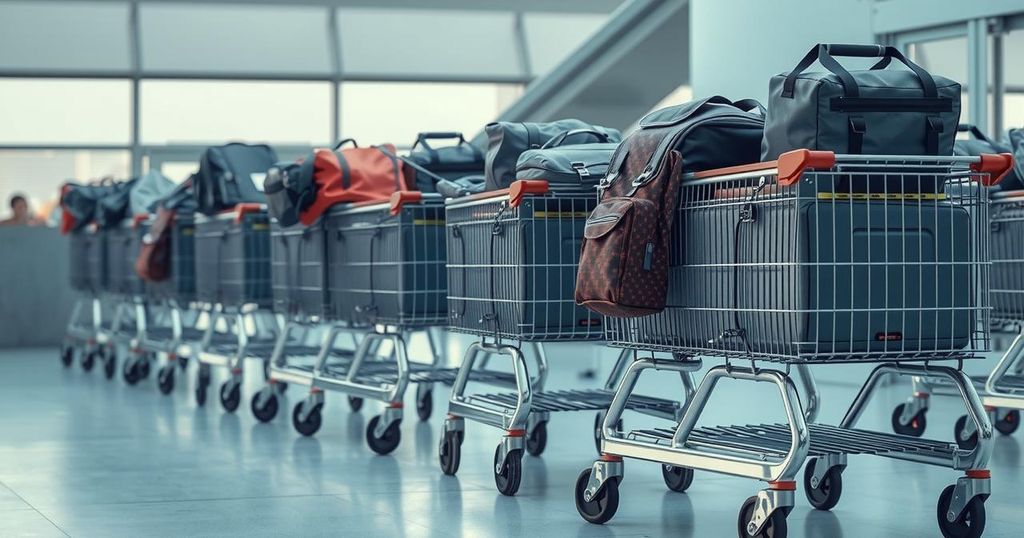Cars
AFRICA, ASIA, COLLEN MSIBI, CURRENT_AFFAIRS, DONALD TRUMP, DULLES, DULLES AIRPORT, EL, IMMIGRATION, JAPAN, JOHANNESBURG, LEADERSHIP, LEGAL CHALLENGES, MS, NORTH AMERICA, NPR, REUTERS, SOUTH AFRICA, SOUTH AFRICAN TRANSPORT MINISTRY, TESLA, TEXAS, TRANSPORT MINISTRY, TRUMP, UNITED STATES, US, US STATE DEPARTMENT, USA, WASHINGTON
Marcus Chen
0 Comments
White South Africans Depart for U.S. Under Trump’s Controversial Refugee Program
The first white South Africans under a Trump refugee program left for the U.S., sparking debate on racial dynamics and privileges. The flight carried 49 Afrikaners, amidst claims of persecution from their Black majority. Trump’s plan allows for expedited resettlement amidst broader refugee admission restrictions. Key statistics show significant wealth disparities between Afrikaners and Black South Africans.
In a significant development, the first group of white South Africans awarded refugee status under a U.S. program initiated by former President Donald Trump left Johannesburg on a charter plane this past Sunday. Reports indicated a long queue of white citizens at the airport, their luggage piled high on trolleys as they awaited passport checks before entering the departure lounge.
According to Collen Msibi, a spokesperson for the South African Transport Ministry, the U.S. funded the charter flight that carried 49 passengers. He noted that the application for permission to land clearly identified the group as “Afrikaners relocating to the USA as refugees.”
The Afrikaners represent a white ethnic minority primarily descended from Dutch, German, and French settlers who played a significant role in South Africa’s apartheid history. During this period, which ended three decades ago, they governed amid severe racial segregation, frequently repressing the Black majority.
This particular flight was set to land first at Dulles Airport in Washington, D.C., before continuing on to Texas. NPR earlier reported that twelve states have agreed to accept these Afrikaner refugees, with many having familial ties in the U.S.
The controversial decision by Trump to extend asylum to white South Africans is rooted in claims of persecution by the country’s Black majority. This assertion is contested, given that Afrikaners continue to enjoy considerable privileges in South Africa, representing around 7% of the population yet owning 78% of the nation’s private farmland.
Moreover, Afrikaners are noted to possess about twenty times the wealth of Black South Africans, underscoring significant socio-economic disparities that persist. Trump had signed an executive order in February, offering resettlement to those he claimed face government-sponsored discrimination, specifically targeting law changes that involve land expropriation.
This new law in South Africa aims to address longstanding inequalities but has been framed by critics, including Trump, as a potential threat to white farmers. In a remarkable twist, the U.S. State Department reported receiving around 8,000 inquiries from white South Africans seeking refuge, indicating substantial interest.
Estimates suggest that as many as 1,000 Afrikaners may find refuge in the U.S. within the current year. However, Msibi confirmed that his department had not received any further applications for resettlement flights, highlighting the rapid nature of this refugee pathway compared to traditional refugee processes which could take years to navigate. It’s a notable contrast against the backdrop of the Trump administration’s restrictive stance on broader refugee admissions as one of his initial executive orders.
In conclusion, the departure of the first group of white South Africans under the Trump refugee plan has highlighted ongoing racial and socio-economic tensions in South Africa. With historical privileges and significant wealth disparities at play, this situation raises questions about the implications of U.S. immigration policy and its intersection with global race relations. Many Afrikaners are looking towards the U.S. for a new start, yet the broader context suggests complex dynamics at work.
Original Source: www.dw.com




Post Comment